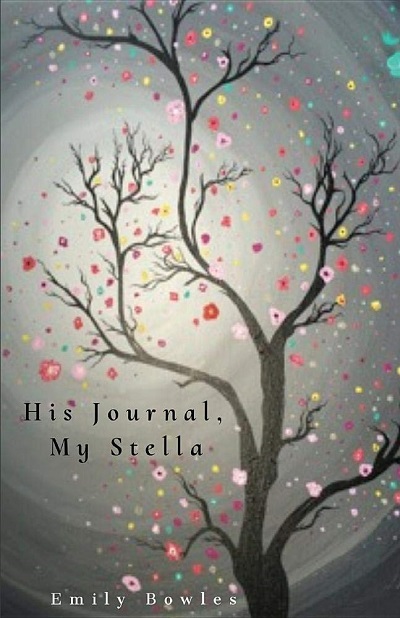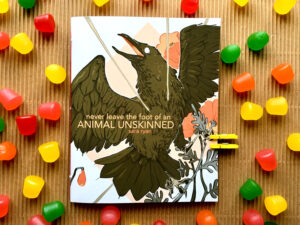So Much of a Mother Is Liquid
So Much of a Mother Is Liquid
A Review by C. KubastaIn the second poem of Callista Buchen’s new collection from Black Lawrence press, the phrase “clouds made of mouths” reminds me why I love poetry—why I can’t help but read it aloud, repeating moments like that over and over.
It first happened with the phrase “a caught moth” from Margaret Atwood’s “The Woman Who Could Not Live with Her Faulty Heart.” I’m a sucker for assonance, the soft echo of vowels that expand on the tongue, weighting the palate. A few pages later in Buchen’s book, I’m reminded why I love prose poetry. In the densely stacked paragraphs, images and lines swim up out of some ether for the reader to find. Without the neutral space of the page as guide, readers themselves are searchers, seekers. I find “this grounding in proximity”—in Part I of a book that traces a story of mothers: daughters-who-become-mothers, mothers-who-grieve, mothers-who-become-mothers-again-but-carry-their-grief-with-them-as-they-mother.
The structure and language of Buchen’s collection establishes both a chronology of a specific story and a tangling of this chronology. Recurring metaphors include liquid (water, milk), construction (road, cement), and various threats. The second poem in each section has the same title, “Flashes,” and its own particular form—discrete lines separated by plenty of white space. The first few iterations of this poem note dangers and potential safe spaces—like a description of a basement during a weather drill, or a mother’s worries and her constant vigil. Pronouns lace throughout the collection, an ever-present “you” that can mean any mother. Woman is italicized: Woman. Mother is too. There is an imperative voice addressing readers.
The poem “Storytelling” makes this conflation of mothers explicit through the children’s book Blueberries for Sal. Who else remembers this book? Is it just me?—I read it to the children I cared for year after year, can picture it now. “Always the same story, the single color illustrations, me reading, my mother reading, her mother reading. What it means to be innocent.” Innocence can mean so many things, but here, at this moment in the collection, the poem appears amid poems about the loss of a baby, a birth. In the poem “Loss,” one of the mothers (I think of all the speakers as mothers by now) says, “I am grief. I am double and half [ . . .] I can be a coffin.” Immediately following that poem is “Kinds of Trucks,” which trucks in construction metaphors (hard hats and steel-toed boots and cement—all about building and safety and protection), and the mother writes, “Somewhere, a woman plans an arboretum, thinks, this morning I am domestic, this afternoon I am wild.”
One of the central poems in Look Look Look is “Metaphysics”—a short poem that encapsulates much of the poems’ multilayered depictions of motherhood. Aside from the second poem of each section, it’s also one of the few lineated poems. Because it so deftly captures the conflict at the center of the collection, it’s worth quoting in full:
Our most ambitious work: mother as birthplace, where woman becomes location.
Someone singing: rejoice! A body in service, a graft here, a graft there.
Call and response: how she (nearly) disappears inside ritual and imprint.
Let’s situate: Where were you born?
In a (nearly) different life, the child stands between her parents: a record, a stain, a
photograph of the future.
Contextualize: There, says the child, pointing toward her mother, home.
Later, how (nearly) altered: child becomes mother, the X on a map.
Call and response: why didn’t you warn me?
A prayer: but who would believe it? says the mother, and turns on the music.
To cast out from this poem, mother(ing) as work/location/disappearance figures heavily. Mother as seen by child, as connected to child, as once-child. The call and response sings throughout Buchen’s poems: the daughter becomes a mother and has a daughter. How much should she tell and when? And would she have listened anyway?
Perhaps if you are a mother, you do not need to know the story, any exact parameters, to know what kind of grief Buchen delineates in certain of these poems. Perhaps the dedication “For caregivers and those who nurture them . . .” is enough. Perhaps by the first line in the first poem, “Here are the wings we imagine, women, printed in blood, muscle . . .” you are already halfway into some ur-story, or some memory-place. You understand the story begun from this early scene: when “women sit in a circle, nursing. They could be knitting, could be planning a war.” As a not-mother, though, there were many things here I did not know—and for me, poetry has always been one of the ways I come to know things: through its sounds, and uncommon language, and juxtaposition of raw and lush. In “Remnants,” the mother tells how when filling out forms “even at the optometrist’s,” the number of pregnancies and the number of live births don’t match. “The third child that is the second child, any day now. She smiles like people do when they say that.”
If the collection has a kind of dénouement, it is the mapping of the mother’s body after the birth of the third-child-who-is-the-second-child, the way the title poem, “Look Look Look,” invokes this body:
Later, I read that the cells of children move through the placenta, latch on to the mother’s
lungs, liver, brain, her skin. The daughter’s cells, the cells of the new baby, the cells
of the baby that was lost. All the people of this body. A fissure leads to fog.
In “Quick Change,” the mother writes about stored bodies she keeps around the house—in the coat closet, under the bed, in the garage. She calls them “the spares” and declares it “better this way.” In poems in the last section, the mother writes about the dark line down her belly, how it doesn’t fade, separated muscles, “the distance between wrecked and whole.” The poem goes meta, referencing itself, what will and won’t work as a metaphor. It ends with “The body as a poem, what won’t grow back.”
About the Author
Callista Buchen is the author of Look Look Look (Black Lawrence Press, 2019) and the chapbooks Double-Mouthed (dancing girl press, 2016) and The Bloody Planet (Black Lawrence Press, 2015). Her work appears in Harpur Palate, Puerto del Sol, Fourteen Hills, and many other journals, and she is the winner of DIAGRAM’s essay contest. She teaches at Franklin College in Indiana, where she directs the visiting writers reading series and advises the student literary journal.
Top photo by Becky Phan on Unsplash

Portaging celebrates new writing from the Midwest with a particular focus on experimental and hybrid work from small presses.
C. Kubasta writes poetry, fiction, and hybrid forms. She lives, writes, & teaches in Wisconsin. Her most recent books include the poetry collection Of Covenants (Whitepoint Press) and the short story collection Abjectification (Apprentice House). Find her at ckubasta.com and follow her @CKubastathePoet.





 A particularly strong poem is “Bad Hunter,” set at the Taxidermy World Championships in Missouri. The speaker describes women who “flock around like smart pink birds” and “men wearing leaves” who “chew on toothpicks.” The poem continues to contrast these genders: men and women, boys and girls. Judges walk through, taking the measure of all the animals there: “this is how wet the nose should be, this is how / cocked the hoof.” The final lines showcase the juvenile of the species— “a girl dusts paint flecks off her road-kill / beaver. a boy licks a pearl of blood from his thumb.” How color-rich and sensual these details. The reader’s understanding of the poem is only deepened by its accompanying endnote, which describes the gendered divisions in the field—hunting is masculine and so women in taxidermy “encounter sexism and gender stereotyping.” However, the footnote informs us women’s numbers are increasing: “young, academically driven, and largely female.” The endnote concludes with lines that could be back in the poem: “Women in polo shirts. In poodle skirts. In camouflage. Combing dead birds as if they were still chirping.”
A particularly strong poem is “Bad Hunter,” set at the Taxidermy World Championships in Missouri. The speaker describes women who “flock around like smart pink birds” and “men wearing leaves” who “chew on toothpicks.” The poem continues to contrast these genders: men and women, boys and girls. Judges walk through, taking the measure of all the animals there: “this is how wet the nose should be, this is how / cocked the hoof.” The final lines showcase the juvenile of the species— “a girl dusts paint flecks off her road-kill / beaver. a boy licks a pearl of blood from his thumb.” How color-rich and sensual these details. The reader’s understanding of the poem is only deepened by its accompanying endnote, which describes the gendered divisions in the field—hunting is masculine and so women in taxidermy “encounter sexism and gender stereotyping.” However, the footnote informs us women’s numbers are increasing: “young, academically driven, and largely female.” The endnote concludes with lines that could be back in the poem: “Women in polo shirts. In poodle skirts. In camouflage. Combing dead birds as if they were still chirping.”

Recent Comments